The dreadful, yet noble, tale of the Byakkotai White Tigers
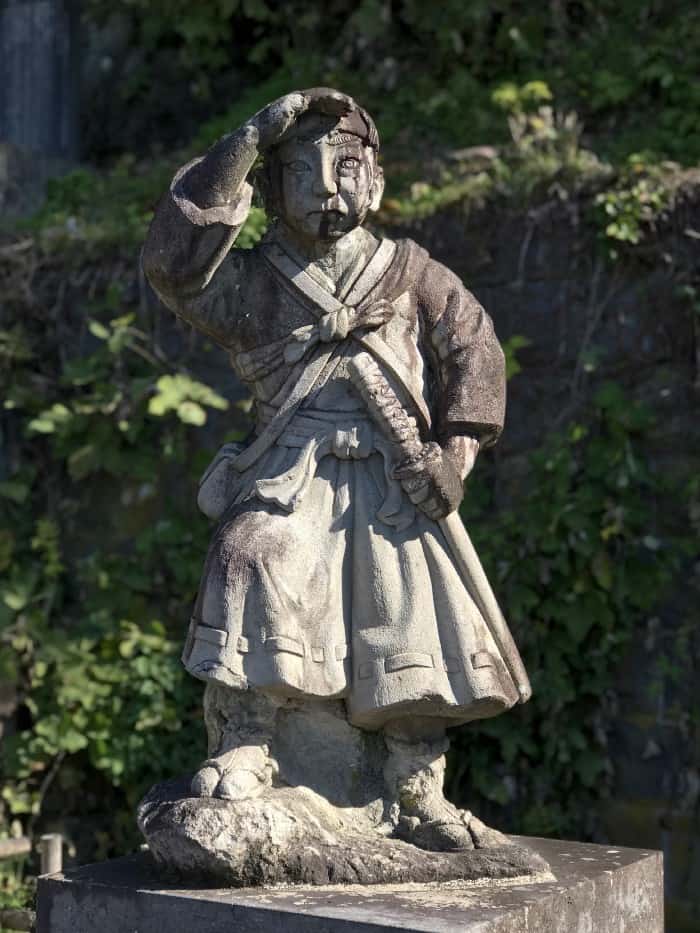
Background
The mid-1800s were a time of turmoil in Japan.
For the 264 years of the Edo Era (1603–1867), Japan had been ruled by the Tokugawa shoguns. Those years of strict control were a time of relative peace. The borders were closed. Foreign interaction was limited to a few tightly regulated port cities, most famously Dejima, a small man-made island off the coast of Nagasaki City.
In 1854, Japan was shaken by its first treaty with a Western power, as the shogun yielded to the intimidating forces of Commodore Perry and his American warships. The floodgates opened to Western trade and influence.
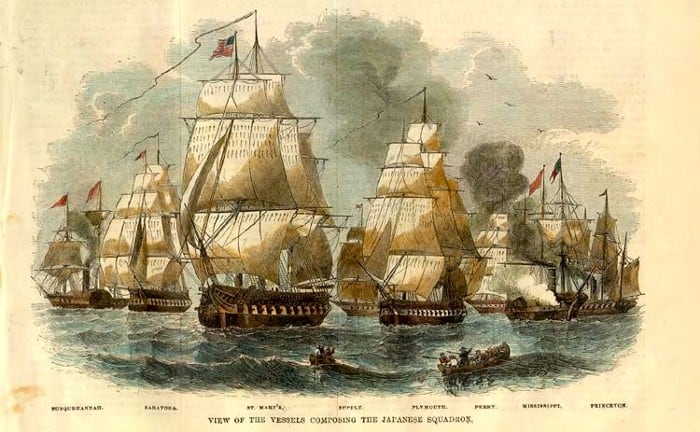
In 1867, the last Tokugawa shogun, Yoshimune, officially resigned and ceremonially returned rule of the country to the emperor, the 14 year old Prince Mutsuhito, who we remember as Emperor Meiji.
Not everyone was happy with these changes.
Bands of masterless samurais, called shishi, or patriots, rallied to the cause of “Revere the emperor, expel the barbarians.”
Domains took sides, those for the new government of the emperor and open to Western influence, and those who wanted to preserve the status quo — the Tokugawa shogunate with the emperor as the lofty figurehead, uninvolved in politics.
Civil war broke out in January 1868. Tokugawa Yoshimune led an army against Kyoto and was defeated by the forces of Satsuma and Choshu, provinces in western Japan, the mainstay of the imperial army.
Battle moved on to Edo, now Tokyo, where the Satsuma leader, Saigo Takamori, negotiated the surrender of Edo Castle. With Edo lost, Yoshimune surrendered and retired to Shizuoka.
But still, the Tokugawa loyalists persisted. The battleground moved north, to the Aizu domain, in Fukushima, where our story takes us.
The Byakkotai, White Tiger Unit
A group of twenty 16–17 year old sons of local samurai made up a portion of the White Tigers, byakkotai, a unit of the Aizu army. After escaping from defeat in battle against the new government’s forces, they made their way through a tunnel to Iimori Hill, overlooking the castle town of Aizu. There they waited for orders and nursed their wounded.
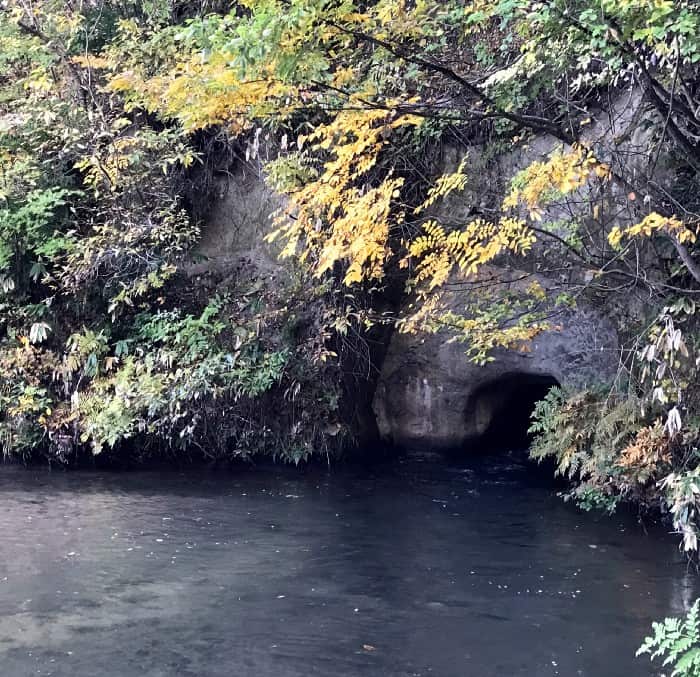
Battle raged in the town below. Smoke was rising from the castle. The boys watched in horror from their perch on the hillside. Had their lord been killed? Were their families dead?
Believing the worst, the young men prepared to die.
To their minds, surrender was out of the question. Overcome by emotion, they felt the only honorable way out was through seppuku, the ritual suicide of the samurai. This noble death was good karma, and they could hope to be reborn into another warrior family in their next lives.
The boys knelt and plunged their short swords into their stomachs, their young blood spilling on the ground.
All but one died.
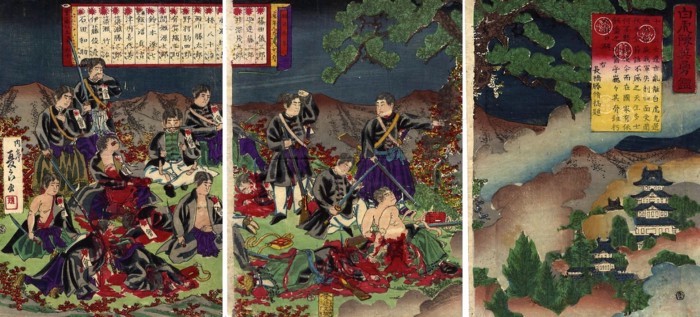
The survivor, Iinuma Sadakichi, was rescued by a peasant. Through him, we know the story of these courageous and noble young men.
The tragedy of the story is that the castle had not burned. The town in front of the castle was on fire, and from their distant view on Iimori Hill, the rising smoke appeared to be coming from the castle.
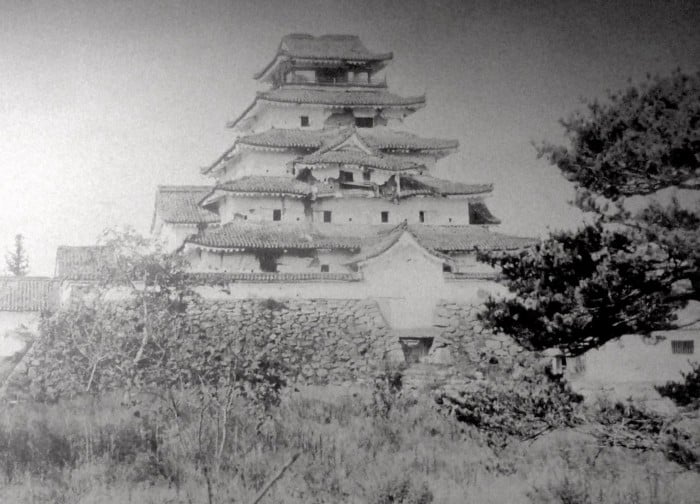
The bodies of the Byakkotai were left on the mountain. A month later Aizu fell to the imperial forces. The government granted permission for the bodies to be interred.
The Lord of Aizu, Matsudaira Katamori, wrote a poem of remembrance for the youths.
No matter how many people
Wash the stones with their tears,
These names
Will never vanish from the world.
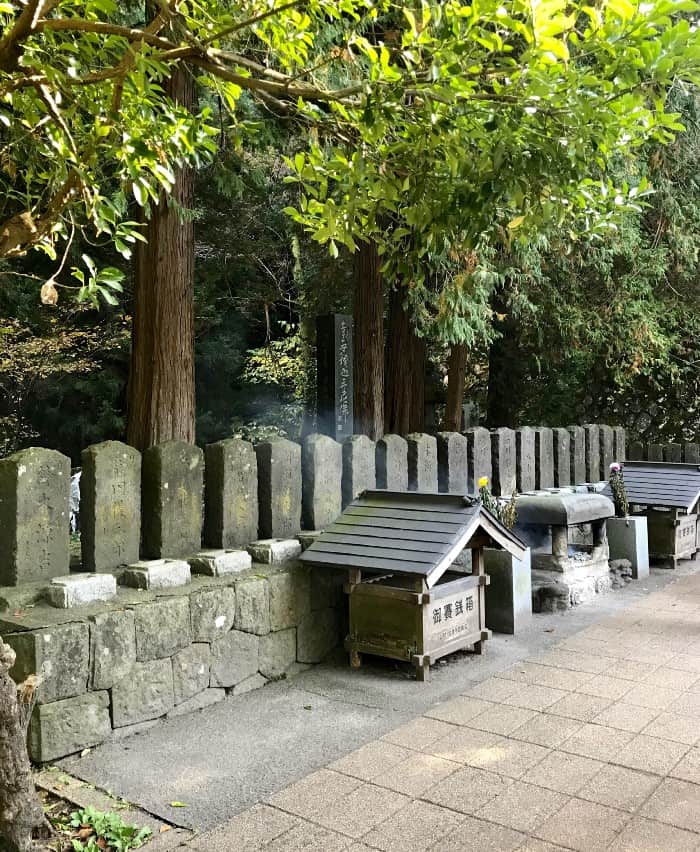
The young men’s graves remain on Iimori Hill, not far from where they died. Frequent visitors offer incense and prayers for their peaceful repose.
The battlefields of the civil war continued moving northward, until, in June of 1869, the Tokugawa loyalists in Hokkaido finally surrendered. Emperor Meiji continued unopposed, ruling over a quickly modernizing Japan until his death in 1912.
Photos ©Diane Neill Tincher unless otherwise noted.
Also on Iimori Hill is the amazing Sazaedō spiral temple.
If you have questions about Japan or suggestions for articles, please add them in the comments. For more photos and information on Japan, follow me on instagram at: https://www.instagram.com/more_than_tokyo/




